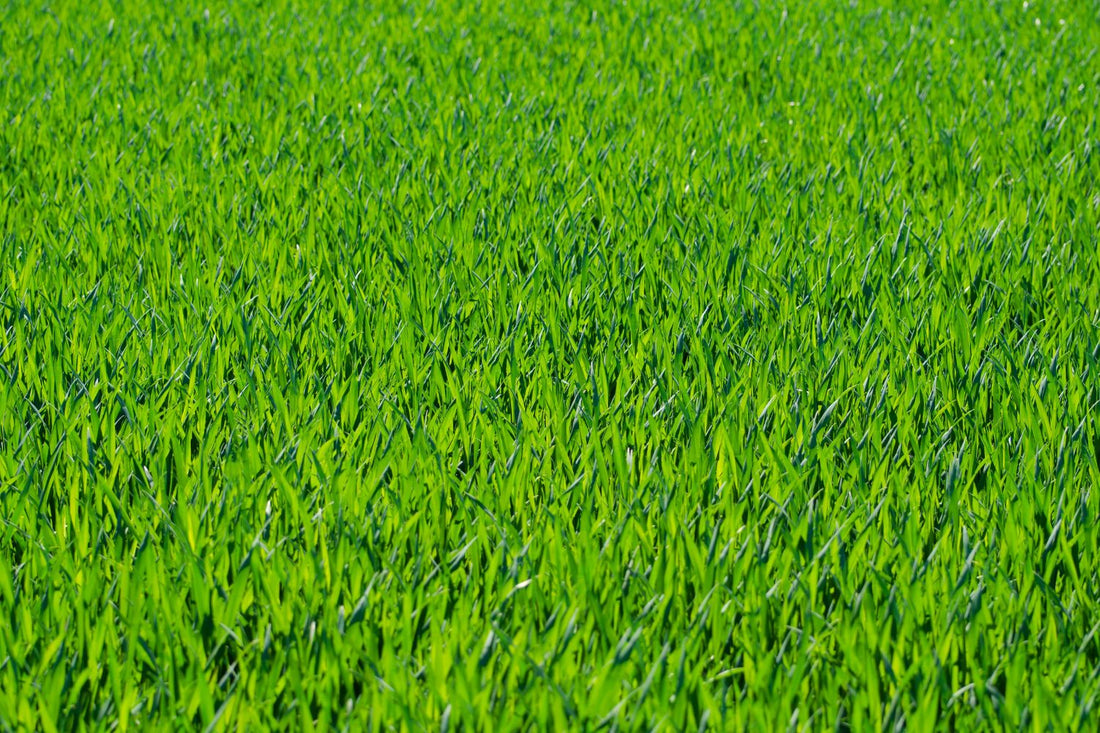Welcome to Lawn Synergy! If you're wondering "how does grass grow?", then you're not alone. As lawn care experts, we know that understanding how grass grows is essential for effective lawn care.
In this article, we'll answer that question by diving deeper into topics such as the different types of grass seeds, the germination process, and the impact of weather conditions and soil preparation on grass growth.
We'll also explore best practices for grass care to help you nurture your lawn to its fullest potential. So, if you're ready to learn the basics of grass care and ensure your lawn thrives, continue reading.
What this article covers:- An Overview of How Grass Works
- Factors That Affect the Duration of Grass Growth
- Caring for New Grass
An Overview of How Grass Works
- Germination: Grass, like all plants, undergoes a fascinating process of growth. Our findings show that grass growth begins with germination. When a grass seed is planted in the soil and given the right conditions—adequate moisture, warmth, and oxygen—it starts to sprout. The seed's stored food reserves support the initial growth until the young grass plant can produce its own food through photosynthesis.
- Seedling Stage: After germination, the grass seedling emerges from the soil. This stage is critical as the young plant establishes its root system. Proper soil conditions and moisture levels are essential for the seedlings to take root and grow strong.
- Tillering: Once the seedling is established, it enters the tillering stage. During this phase, the grass plant begins to produce additional shoots, called tillers, which help the plant spread and thicken. This stage is vital for creating a dense, healthy lawn.
- Vegetative Growth: As the grass continues to grow, it enters the vegetative stage. In this phase, the plant focuses on producing leaves and stems, utilizing sunlight through photosynthesis to create energy. This energy is then used for further growth and development.
- Reproductive Stage: Eventually, the grass plant may enter the reproductive stage, where it produces flowers and seeds. This stage is less common in well-maintained lawns, as regular mowing typically prevents the grass from flowering.
- Dormancy: Depending on the species and environmental conditions, grass may enter a dormancy period. During this time, growth slows or stops, and the plant conserves energy. Dormancy is often triggered by extreme temperatures or lack of water.
Understanding these stages of grass growth is essential for effective grass care.

Factors That Affect the Duration of Grass Growth
Various elements such as light, water, soil quality, nutrition, and temperature significantly influence how fast grass grows. Let's look at some of those factors:
Type of Grass Seed
Different types of grass seeds have varied growth rates and requirements. Cool-season grasses like Kentucky bluegrass and Tall Fescue thrive in cooler temperatures, growing best during the spring and fall.
In contrast, warm-season grasses such as Bermuda and Zoysia grass prefer warmer climates and peak growth occurs in the summer.
Choosing the right type of grass seed for your region is crucial for optimal growth. Understanding the specific needs of each grass type ensures that you can provide the appropriate care, resulting in a healthy and resilient lawn.
Germination
The germination of grass seed is a critical phase. Most grass seeds germinate within 7-14 days, depending on the species and environmental conditions.
Ensuring the soil is consistently moist during this period is vital for successful germination. The seeds need adequate moisture, warmth, nutrition, and oxygen to sprout.
Without proper care during germination, the seeds may fail to develop into healthy plants. By maintaining optimal conditions, you set the stage for strong, vigorous grass that will form the foundation of your lawn.
Weather Conditions
Weather conditions greatly impact grass growth. Temperature, rainfall, and sunlight all play crucial roles.
From our experience, cool-season grasses flourish in moderate temperatures and require regular rainfall, whereas warm-season grasses thrive in hot weather and can tolerate drought conditions.
Understanding your local climate helps in selecting the appropriate grass type and planning the best care practices.
Adjusting your watering and mowing routines according to the weather ensures that your lawn remains healthy throughout the year.

Soil Prep
Proper soil preparation is essential for successful grass growth. Before planting, it's important to test the soil and amend it if necessary.
Adding organic matter, such as compost, can improve soil structure and fertility. Aerating the soil allows for better root penetration and water absorption. By getting your soil right from the start, you're setting up the lawn for success.
From our experience, well-prepared soil provides a solid foundation for grass to establish strong roots and grow vigorously.
Taking the time to prepare your soil adequately will pay off in the long run with a lush, healthy lawn.
Caring for New Grass
Once your grass has started growing, maintaining it requires regular care.
We recommend fertilizing your lawn every 6-8 weeks during the growing season. Using the right amount is crucial—how much fertilizer for lawn depends on the grass type and soil needs.
Over-fertilizing can be detrimental. Many may ask the question, “will fertilizer kill new grass if not applied correctly”?
Yes, it can, so always follow the instructions on the fertilizer label. In addition, regular watering, mowing, and weed control are essential aspects of grass care.
It's important to strike a balance between feeding your grass and preventing weeds. Whether to use weed and feed or grass seed first depends on the current state of your lawn. If weeds are prevalent, address them first before seeding. If full renovations need to be done, apply a non-selective herbicide first to make sure everything is all cleaned up and you have a clean slate.
If you're looking for premium fertilizers, we recommend our lawn fertilizer collection. Amongst our collection, the Almighty 20-0-10 Lawn Fertilizer is a standout choice.
This fertilizer is high in nitrogen but slow-release, providing essential nutrients over time without the risk of burning your grass.
Conclusion
Understanding how grass grows is the first step toward a thriving, beautiful lawn.
From choosing the right grass seed to knowing how long does lawn fertilizer take to work, every aspect plays a role in your lawn's health.
At Lawn Synergy, we are committed to providing you with eco-friendly lawn care solutions that make your grass greener and your care routine more sustainable.
If you want to learn more, why not check the article below:
- How Often to Fertilize Lawn
- Best Fertilizer for Yellow Grass
- Best Fertilizer for Bahia Grass
- Best Fertilizer for Tall Fescue Grass
- Best Weed and Feed for St. Augustine Grass
- Best Fertilizer for Centipede Grass in South Carolina
- Best Organic Fertilizer for Lawn
- Best Weed and Feed for Lawns
- Best Lawn Fertilizer for Texas
- Best Lawn Fertilizer for Florida
- Best Time to Fertilize Before or After Rain
- Best Lawn Fertilizer for Winter
- Best Time to Fertilize Lawn Before or After Mowing
- Best Time of Day to Fertilize Lawn
- Liquid vs Granular Lawn Fertilizer


